The trimodal logistics hub of thyssenkrupp Logistik GmbH in the heart of the Ruhr is the result of over 140 years of continuous innovation and further development.
Overview of historical milestones
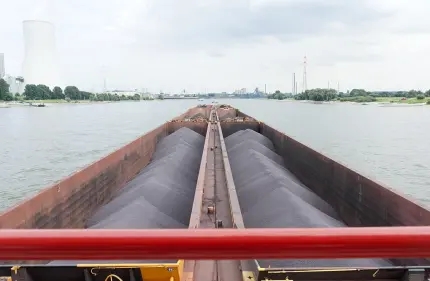
2022 – today
Establishment of the thyssenkrupp Steel Logistics GmbH operating company in July 2022.
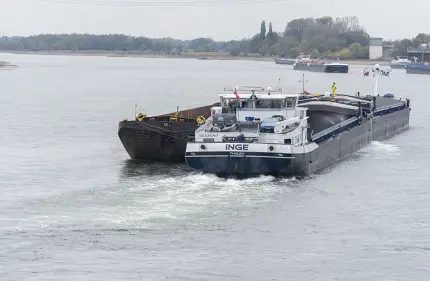
2010-2020
Acquisition of new towboats with a propulsion concept for optimized exhaust emissions. Merger of the limited company (GmbH) with thyssenkrupp Steel Europe AG as a service/functional area in May 2011.
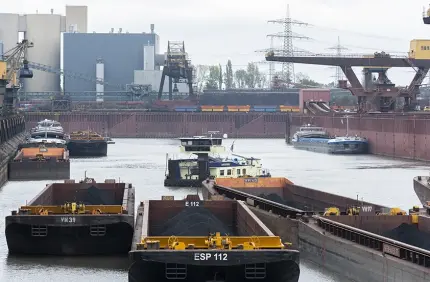
1990-2010
Construction of the slab storage yards and Bridge 5 as part of the "Hercules" strategy for managing the slab storage yards in Beeckerwerth and Walsum-Süd. First use of reach stackers for slab handling from 2008 onward.
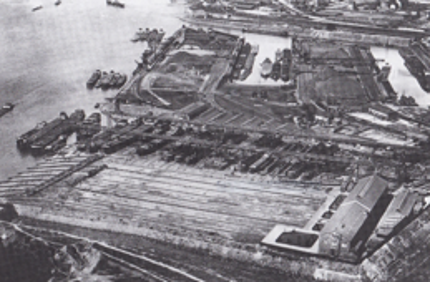
1980-1990
Use of shovel loaders in lighters to speed up unloading procedures. The first formation of six push barges arrives at the port of Schwelgern in February 1986. Increased scope of rail transport services for third parties as of October 1990.
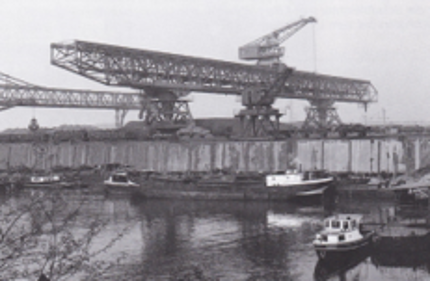
1970-1980
Modernization of loading bridge 3 on the west bank and the "Thyssen 2" push boat. Reorientation at Walsum-Süd by construction of a hall with protected harbor basin and rail link, together with modernization of the two Rhine cranes.
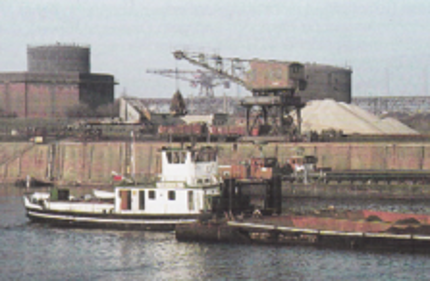
1960-1970
In response to the increase in push boat traffic, the shipping fleet and the south bank are modernized and a debris and slag transshipment facility is established directly on the River Rhine. Takeover of the Hüttenwerk Oberhausen AG iron and steel plant by August-Thyssen Steelworks.
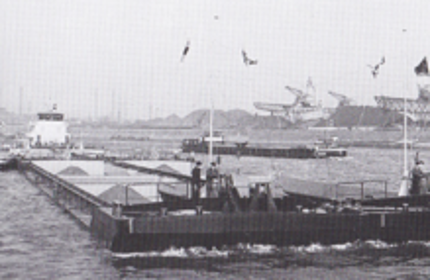
1950-1960
The modern era of push boat traffic is ushered in with the "Wasserbüffel" (water buffalo) push boat in 1957. Maiden voyage in November with a cargo of 5,000 metric tons of ore from Amsterdam to the Thyssenhütte mill.
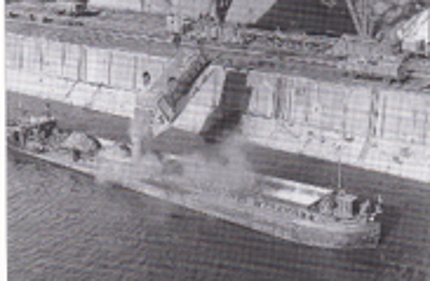
1946-1950
After the war, the "Railway and Ports" department of the August-Thyssen-Hütte (ATH) is transformed into the "Joint Operation Railway and Ports" for the transport and transshipment of incoming and outgoing goods.
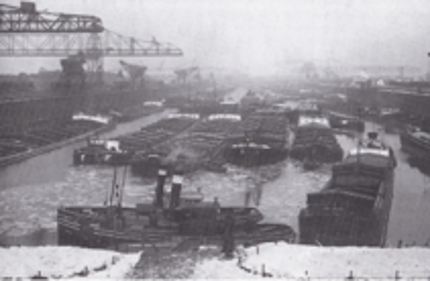
1900-1930
Capacity expansion by new port construction in Schwelgern. Establishment of the GDK Port and Railway Construction Office with the Railway and Ports Department. First deployments of the harbor tugs Thyssen I and II.
1880-1900
Transportation of coal from the former shaft of the Gewerkschaft Deutscher Kaiser (GDK) mine and commissioning of the Alsum Rhine port. Increase in railway transports in response to operation of the plants in Bruckhausen and Meiderich.